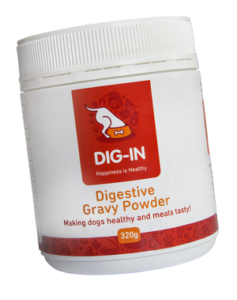 We share many things with our canine companions – lots of love, play time and fun-filled exercise sessions. Unfortunately your dog can also inadvertently share less desirable things with us, such as a ringworm infection. Ringworm doesn’t have very discriminating tastes, and will readily spread between animals and humans.
We share many things with our canine companions – lots of love, play time and fun-filled exercise sessions. Unfortunately your dog can also inadvertently share less desirable things with us, such as a ringworm infection. Ringworm doesn’t have very discriminating tastes, and will readily spread between animals and humans.
Despite its name, ringworm isn’t actually a worm or even caused by a worm, instead it’s a fungus which infects the top layers of skin and hair. While generally harmless, ringworm is highly contagious to humans, especially to children, the elderly and anyone with a compromised immune system.
Ringworm can be caught from a variety of sources which include the soil, other people and also by coming in contact with an infected animal. Because of the fungal spore’s ability to survive for long periods in the environment, your dog can contract ringworm from pretty much anywhere an infected animal has been.
Ringworm Symptoms
In humans, ringworm infections are commonly identified by the presence of red, itchy skin lesions in the shape of rings. While these same lesions appear on infected dogs, it’s not always possible to see them given that most dogs have a thick covering of fur. Symptoms of ringworm may include:
- Dry, dandruff-like scales in your dog’s coat
- Red lesions on the head, chest, forelegs or along the back
- Scaling, crusting, thickening and reddening of the skin
- Circular patches of hair loss (alopecia) on the head, tail or along the back
- Itchiness or poor coat condition
If you suspect your dog has ringworm, it’s important to go straight to your vet, as diagnosis often requires a thorough clinical examination and testing.
How to Treat Ringworm
Ringworm infections are treated in a variety of ways. Sometimes a cream, wash or medicated shampoo may be enough, but your vet will recommend the best combination of treatments for your dog. Treatments may include:
- Topical treatments. For mild cases, anti-fungal creams and ointments can be applied directly to the affected areas of your dog’s skin. It’s important you only use ointments and shampoos that have been recommended by your vet, as other products may aggravate the condition.
- Oral medication. While ointments can be effective, treatment will often include an oral anti-fungal drug to eradicate the infection. Treatment usually needs to be continued for at least six weeks and sometimes even longer.
- Cleaning the environment. As ringworm can live on both skin and hair, it can be easily transmitted by loose hair in the carpet or on furniture. When treating your dog for ringworm, it’s important to also thoroughly clean their environment. Clean and vacuum any carpet, furniture or pet bedding your dog had contact with, disinfect household surfaces, and try to restrict your dog to non-carpeted areas which are easier to keep clean.
Your dog gives you unconditional love and loyalty, and one way we can help repay them is by ensuring we keep them in peak condition. Healthy dogs have some natural immunity against ringworm infections, so by keeping your dog in great condition, you can help your canine companion stay infection-free.
By adding Dig-In Digestive Gravy Powder to your dog’s meal every day, you’ll help to maintain your dog’s excellent condition and boost the strength of their immune system. You won’t get any complaints from your dog – not only is our gravy a fantastic supplement to your dog’s diet, it also tastes great!






